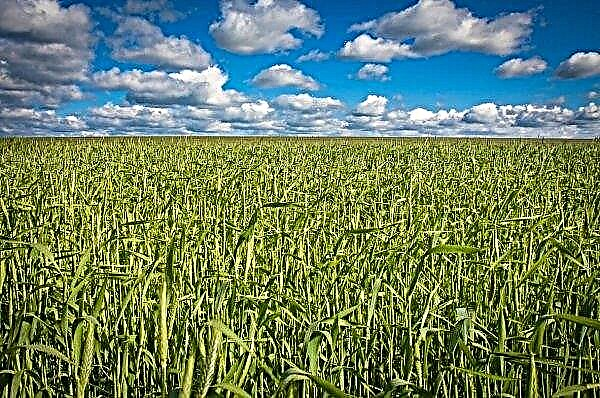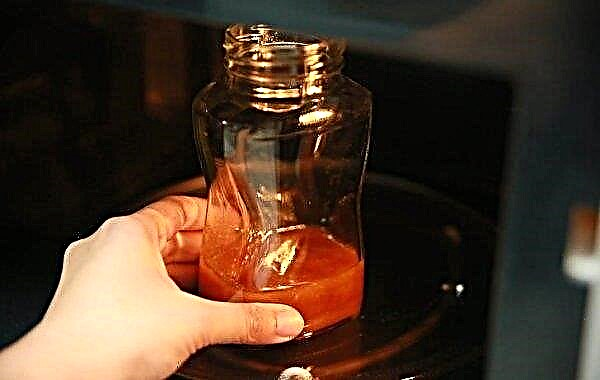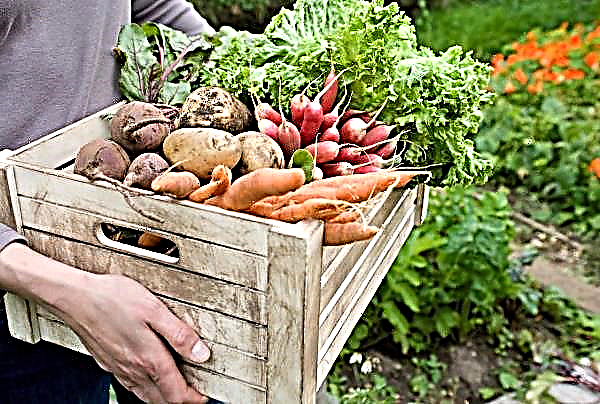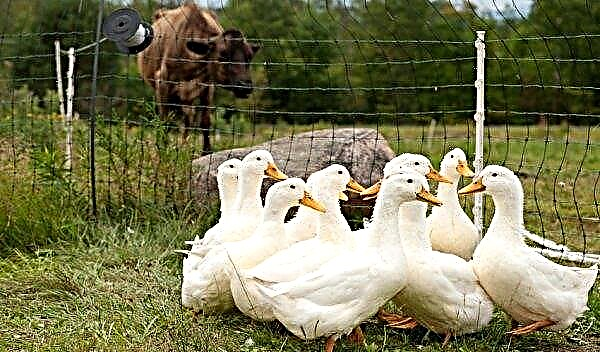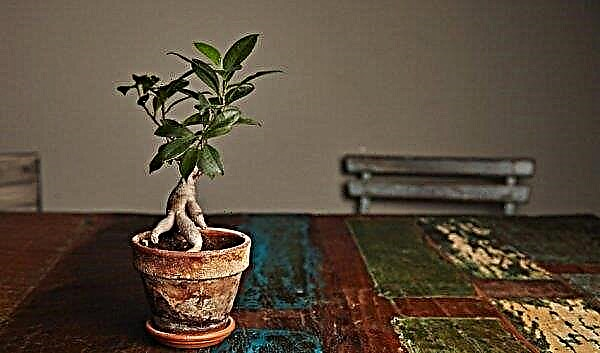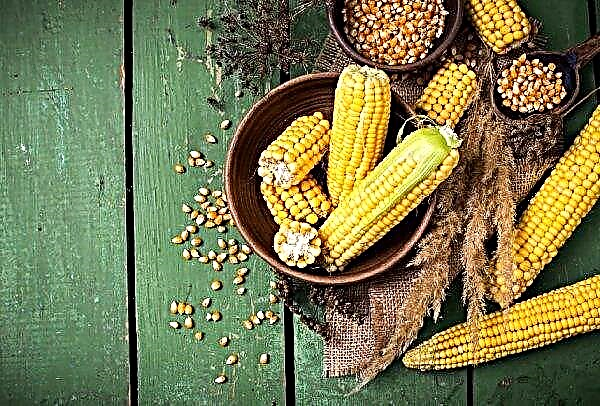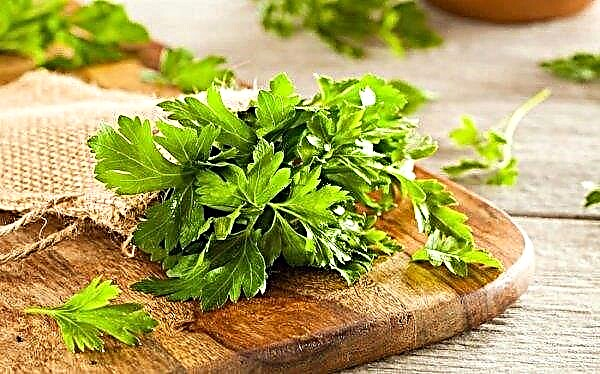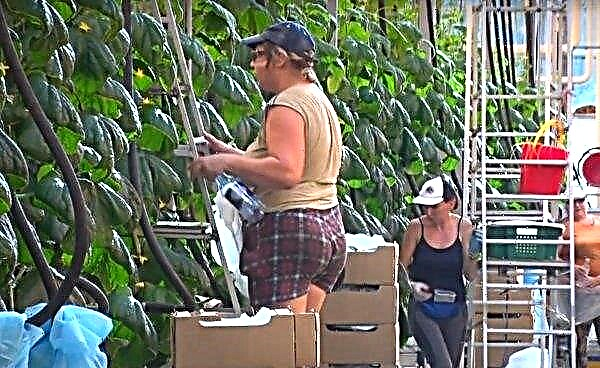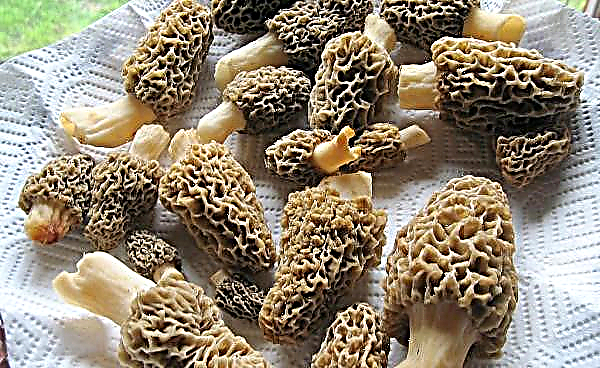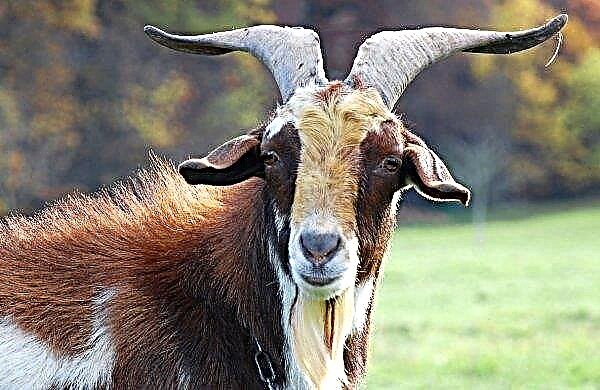Blackberry berries attract attention both with a bright taste and with benefits, and unpretentiousness in the care allows you to grow a culture in many regions of the country. The following are the characteristics of the American Darrow variety, as well as the features of the blackberry agricultural technique and its propagation options.
Selection history
Work on the variety began in 1940 in New York, and the first plant was obtained in 1946. For breeding, the varieties Eldorado and Hedrick were used. The blackberry got its name in 1958 in honor of Dr. J. Darrow, who for many years was engaged in fruit plant breeding in Maryland, USA. To date, the owner of the variety is Cornell University, New York, USA (former New York State Agricultural Experiment Station).
Did you know? Mexico is the leader in the industrial cultivation of blackberries, with the crop being almost completely exported to the United States and Europe.
Botanical Description
According to American sources, the variety has the following biological characteristics:
- erect bush, length of lashes 2.5–3 m;
- spikes are long, straight and thick, of a reddish hue;
- pinnate leaves, 5 lobed, green;
- white flowers are collected in 8-12 pieces;
- berries elongated, conical, black;
- the length of the berries is about 2.5 cm; in Russian-speaking sources, the weight is up to 4 g;
- the taste is sweet and sour, the flesh is juicy.
Characteristic
The resistance parameters indicated by the authors of the variety are given for the climatic conditions of the state of New York, and the reviews of domestic gardeners allow us to draw conclusions regarding the cultivation of Darrow in our country.
Drought resistance, frost resistance
Blackberry Darrow is characterized by high frost resistance, withstanding temperatures up to -34 ° C. No drought tolerance information available.
Productivity, fruiting
The variety is self-fertile and does not require cross-pollination. The berries do not hide in the foliage, inside the bush, but are located outside, which greatly facilitates their collection. Fruiting begins early and stretches for 1–1.5 months, while in the fall the plant can also form a certain number of berries.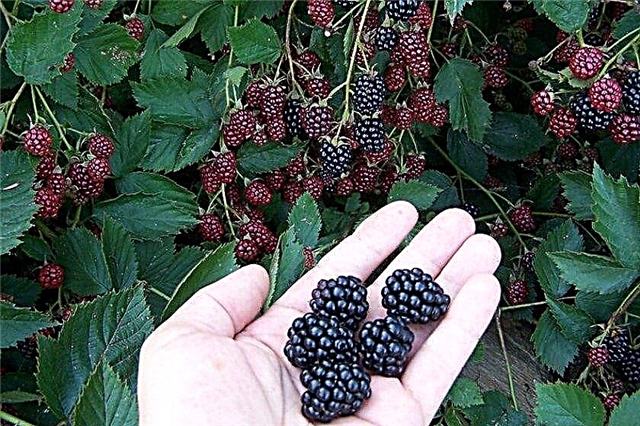 Russian-language sources indicate that the yield of an adult bush reaches 10 kg.
Russian-language sources indicate that the yield of an adult bush reaches 10 kg.
Advantages and disadvantages
- The advantages of the blackberry Darrow are the following features of the variety:
- high productivity;
- excellent frost resistance;
- disease resistance.
The relative disadvantages include the presence of sharp spikes and the need to use trellis or garter.
Landing Features
For the proper planting of the crop, it is important to comply with the optimal deadlines, choose a suitable place and a quality seedling.
The timing
Due to its high frost resistance, it is possible to plant Darrow blackberries both in spring (until the buds are open) and in autumn (after growth is completed).
In the northern regions, it is better to plant a plant in spring so that the young seedling has time to gain strength and easily transferred the first wintering.
Seat selection
For a blackberry, choose a sunny place that is not blown by a strong wind. Landing on a shady or flooded, moist area can lead to too long ripening of shoots and significantly reduce the frost resistance of the plant.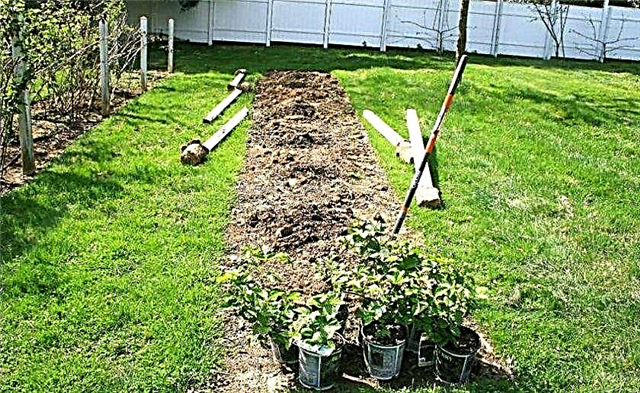 Often, bushes are planted near walls or fences, used to create prickly hedges. Blackberries are not demanding on the composition of the soil, only carbonate soils can cause chlorosis.
Often, bushes are planted near walls or fences, used to create prickly hedges. Blackberries are not demanding on the composition of the soil, only carbonate soils can cause chlorosis.
Selection and preparation of planting material
In order not to be mistaken with varietal correspondence, it is recommended to buy seedlings in nurseries specializing in berry crops or in proven garden centers. For successful planting, a seedling needs 1-2 shoots with a diameter of about 5 mm and a developed root system without signs of mold and rot. There must be at least one kidney on the rhizome.
Landing pattern and process
It is worth noting that this crop takes up a lot of space and between two bushes it is necessary to leave at least 1–1.5 m, and when planting in rows, the row spacing should be at least 2 m. It is advisable to immediately provide support for powerful shoots, for example, a trellis of 3- x rows of wire at a height of 50, 120 and 180 cm.
Did you know? Ezemalin or bozenova berry is a hybrid of raspberries, blackberries and logan berries, which was bred in 1923 in California.
A planting hole is dug with a size of 40 x 40 x 40 cm. A mixture of 5 kg of humus, 100 g of superphosphate and 40 g of potassium top dressing is poured onto its bottom, and a layer of garden soil is poured on top.
Planting a blackberry is as follows:
- The seedling is placed in a pit, and the roots are carefully straightened.
- Sprinkle the seedling with soil, so that the root buds are 2–4 cm below the ground.
- Shoots of the bush are cut, leaving 2-3 buds.
- The plant is watered with 3-6 liters of water, and the trunk circle is mulched with peat, compost or mowed grass.
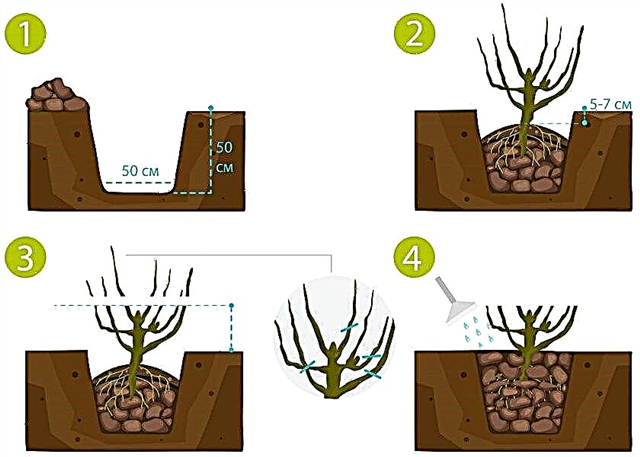
Care Rules
Despite the drought resistance characteristic of the crop, moderate harvesting is necessary to ensure moderate watering for the blackberry. After planting, young plants are regularly watered for 1–1.5 months, and then during periods of drought. Adult fruiting plants need watering in the phase of active shoot growth and berry ripening. Soil care consists in removing weeds and loosening the soil.
Aisles are loosened 5-6 times per season to a depth of 10-12 cm, and immediately near the plant, it is sufficient to loosen to a depth of 5-8 cm 2-3 times. The use of mulch from straw, compost, fallen forest foliage and other organic materials can significantly reduce the frequency of watering, the number of weeds and the need for loosening. Mulching accelerates the ripening of blackberries by several days.
To obtain a high yield, a plant needs a large amount of nutrients. In the spring and autumn, 4-5 kg of manure or compost are added per m². In the autumn, they are mixed with 30 g of superphosphate and 40 g of potassium sulfate and carefully sealed when digging to a depth of not more than 12 cm. In spring, the indicated amount of manure or compost is covered with an additional layer of peat (2-3 cm).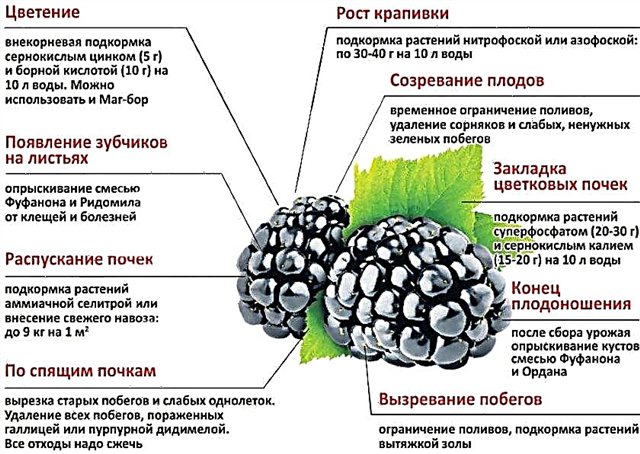
Trimming and shaping bushes
Blackberry shoots are attached to the trellis, dividing them into young and fruitful. This technology simplifies harvesting and facilitates plant care.
We advise you to read how to make a trellis for a blackberry yourself.
Usually use one of these mounting methods:
- fan, in which adult shoots are laid out to the sides in turn (left and right), and the branches of this year are directed upward in the center;
- separatedwhen young shoots are fixed on one side of the center, and fruit-bearing on the other;
- waveswhen adult whips are let on the lower wires, bending them with a wave. Young shoots are fixed in the upper rows;
- ropeswhen the fruiting lashes are laid out along the wire, and the young ones are let in the center.
 Pruning is done after picking berries, completely cutting off the prolific whips at the ground level, and also removing the diseased parts of the bush.
Pruning is done after picking berries, completely cutting off the prolific whips at the ground level, and also removing the diseased parts of the bush.Important! To work with prickly blackberry shoots, tight gloves made of leather or tarpaulin, as well as a garden pruning tool with long handles, are needed.
During the growing season, pinch young shoots according to the following principles:
- upon reaching a height of 80-100 cm, the tops are shortened by 10 cm;
- when the lateral shoots grow to 50-60 cm, they are cut to a length of 40-45 cm.
Harvesting and storage
Blackberry Darrow shows extended fruiting, so the crop is harvested in several stages. Perform work only in dry weather. For processing and fresh consumption, not far from the place of cultivation, the berries are picked completely ripe. For transportation over long distances, harvesting is carried out several days earlier.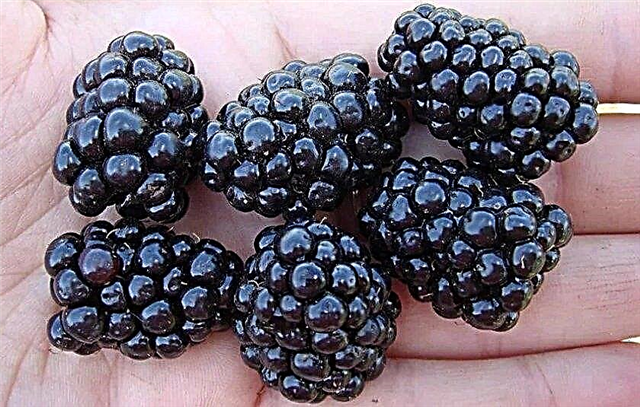 At room temperature, the shelf life of a blackberry is on average 1-2 days. If the berries are quickly cooled and kept at a temperature of about 0 ° C and a humidity of 90%, they will last up to 14 days. Blackberry is great for deep freezing.
At room temperature, the shelf life of a blackberry is on average 1-2 days. If the berries are quickly cooled and kept at a temperature of about 0 ° C and a humidity of 90%, they will last up to 14 days. Blackberry is great for deep freezing.
Winter preparations
With high winter hardiness, this variety does not need additional shelter for the winter. Before the onset of frost, pruning and autumn digging should be carried out with the filling of fertilizers.
Breeding methods
Blackberries with shoots of direct type are propagated by root processes and cuttings. To prepare the cuttings, a healthy mother plant should be dug up and its root cut into pieces 10-15 cm long. The thickness of the root suitable for cuttings should not be less than 5 mm. At the end of summer or spring, cuttings are placed in holes 10 cm deep, sprinkled with soil on top and watered abundantly. The grown plants will begin to bear fruit in the 2nd year. Root offspring are formed every year near an adult bush. For propagation, a shoot near a healthy high-yielding plant is selected and dug up it when it reaches 10-15 cm in May-June with a lump of land. You can also use annual shoots, about 10 mm thick at the base. After digging, the shoots are cut to a total length of 30–40 cm (taking into account the length of the root).
Root offspring are formed every year near an adult bush. For propagation, a shoot near a healthy high-yielding plant is selected and dug up it when it reaches 10-15 cm in May-June with a lump of land. You can also use annual shoots, about 10 mm thick at the base. After digging, the shoots are cut to a total length of 30–40 cm (taking into account the length of the root).
Important! Blackberry seeds are also suitable for planting, the sprouts obtained from them will have all varietal characteristics, but such a plant will give berries only after 3-4 years.
Diseases and Pests
Darrow is quite resistant to most diseases, but errors in care and adverse weather conditions can cause infection of the crop with the following diseases:
If fungal diseases are detected, spraying with garlic infusion or sulfur preparations is used, and for the prevention, young foliage is treated with 1% Bordeaux liquid.
Important! Blackberries have common pests with raspberries, strawberries and strawberries, so these crops should be planted at the maximum distance.
The following pests are most dangerous for blackberry plantings:
Despite the considerable age, the blackberry Darrow has still not lost its relevance and is grown both on personal plots and on industrial plantations. This variety is especially suitable for cultivation in regions with severe frosts.

